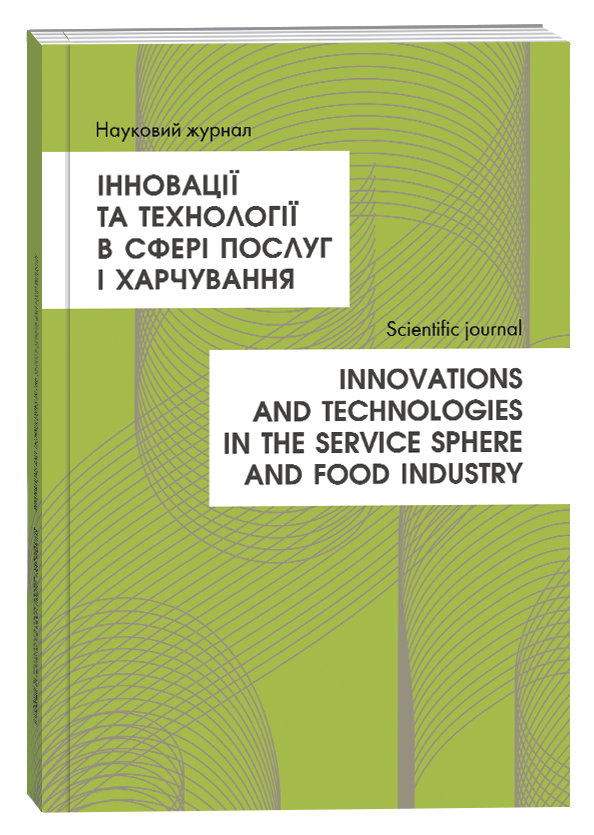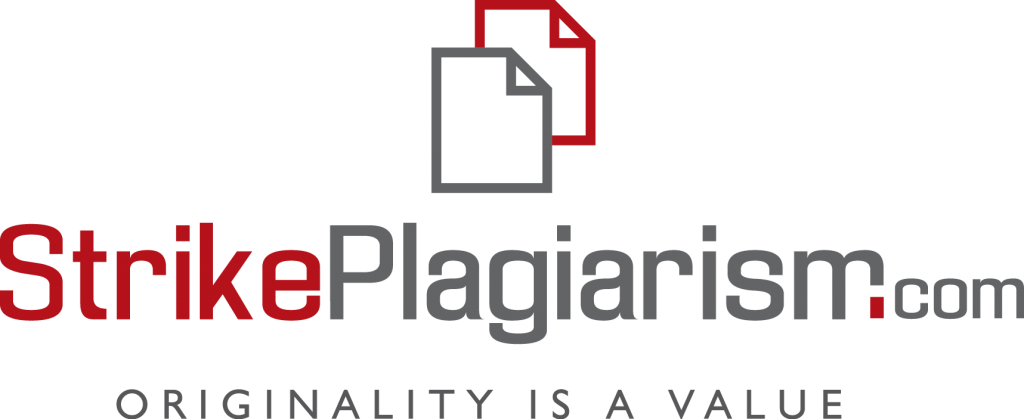THE PROBLEM OF EFFECTIVE COST MANAGEMENT IN THE RESTAURANT INDUSTRY IN THE CONTEXT OF DEVELOPMENT TRENDS OF MODERN SOCIETY
Abstract
The article examines key aspects of effective cost management in the restaurant industry at the current stage of society's development through the prism of the specifics of integrating digital technologies into the activities of a restaurant establishment. It was found that in the era of the digital society, the integration of leading innovative information and communication technologies (from digital means of communication, document management, digital tools for accumulating and analyzing information, to digital platforms, software products, etc.) into the cost management process of restaurant establishments is of particular relevance. It was found that digital solutions in the modern restaurant industry directly affect profits due to better cost control and revenue optimization, and restaurant establishments that use technology are ahead of their competitors in the modern digital world. Improving POS systems transforms the process of managing operations and interacting with customers in the restaurant industry. It was found that the main trends in restaurant technology that create the basis for success in the restaurant industry at the current stage are: automated digital menus and self-service kiosks, augmented reality (AR) and virtual reality (VR), robotic kitchens, AI-Power, hyper-personalized experiences, smart restaurant management and IoT, rethinking the organization of events and private dining: three-seaters, eco-friendly technologies, online ordering platforms, hiring and scheduling technology, contactless and mobile payment solutions, improvements to POS systems, reservation and booking systems, food and beverage cost solutions, Wearable Tech. Digital tools that contribute to improving the efficiency of the cost management process in the restaurant industry using the example of back-of-house (BOH) are analyzed. It was found that a significant advantage of implementing digital tools in the back-of-house is the ability to easily access the restaurant's digital footprint, which stores, analyzes, and interprets data from all critical processes in a catering establishment.
References
Андрющенко І. С. Cost management system forming of restaurant companies. Technology Audit and Production Reserves, 2015. 1(5(21). P. 68–72. DOI: https://doi.org/10.15587/2312-8372.2015.37875
Воскобійник М., Воскобійник О., Бабаєв В. Цифровізація процесів управління витратами на підприємстві. Collection of Scientific Papers «SCIENTIA». 2023; Helsinki, Finland, 58–59.
Рябенька М. О. Управління витратами на підприємствах ресторанного господарства. Науковий вісник Ужгородського національного університету. Серія: Міжнародні економічні відносини та світове господарство. 2022. Вип. 42. С. 120-124.
Стамат В. М. Сучасні тенденції менеджменту ресторанного бізнесу. Modern Economics. 2022. № 36. С. 130-136.
Шатілова О., Шишук Н. Цифрові інструменти інноваційного розвитку бізнесорганізації. Проблеми економіки. 2020. № 4 (46). С. 249-255.
Álvarez Morales E. L., Lazo Planas. L. A. El sistema de costeo por actividades en las pymes con responsabilidad social empresarial. Cofín Habana. 2017. Vol. 12(2). pp. 46-56.
Çöl B., İmre M., Yıkmış S. Virtual reality and augmented reality technologies in gastronomy: A review. eFood. 2023. No. 4. URL: https://www.researchgate.net/publication/370364854_Virtual_reality_and_augmented_reality_technologies_in_gastronomy_A_review.
David F. Conceptos de administración estratégica (14a. ed.). México: Pearson Educación, 2013.
Fonseca E., Oliveira I., Lobo J., Mota T., Martins J., Au-Yong Oliveira M. Kitchen robots: the importance and impact of technology on people’s quality of life. In World Conference on Information Systems and Technologies. La Toja Island. 2019. pp. 186–197.
Lemos J. E., Rodríguez J. A. Propuesta de diseño de costos ocultos ambientales para el proceso productivo del ácido cítrico de la empresa Ramo de alimentos de la ciudad de Palmira (valle). Contexto. 2016. Issue 5. рр. 183-196.
Lyubchuk O., Hryvtsova О. The problem of development of restaurant business in the context of world trends (on the example of the city of Mariupol). RPPSTU. 2019. Issue 1 (37). pp. 49-56.
Matsenko, O., Kubatko, O., Bardachenko, V., & Demchuk, K. (2021). Transformation of the RestaurantBusiness as a Result of the COVID-19 Pandemic: Improving the Security of Service and Maintaining theHealth of Human Capital. Health Economics and Management Review, 3, 27-38.
Montoya A. La distribución de costos indirectos de fabricación, factor clave al costear productos. Scientia et Technica. 2010. Issue XVI(45). pp. 79-84.
Restaurant Technology: Top 2025 Trends and Tools. Tripleseat. 2024. URL: https://tripleseat.com/blog/restaurant-technology-top-trends-and-tools.
Sánches-Escalante J. M. Estrategias gerenciales para la optimización de los costos en restaurantes gourmet. Revista Gestión y Desarrollo Libre. 2021. Vol. 6(12). рр. 1-30.
Santana Martínez J. A., Martínez Espinoza C. E., Madrid Moreno O. A., Romero Vásquez E. N., Muñoz Gilvao K. K. Análisis a la señalética del Pueblo Mágico de Mocorito, Sinaloa, México. Revista Gestión y Desarrollo Libre. 2021. Vol. 6(11). рр. 61-75.
7 ways digital tools help improve your restaurant’s back-of-house. TransAct. 2024. URL: https://transact-tech.com/blog/blog/fst-posts/7-ways-digital-tools-help-improve-your-restaurants-back-of-house/
Torrado I. Р. La acción popular en el contrato estatal “una divergencia en el Consejo de Estado. Revista Gestión y Desarrollo Libre. 2021. Vol. 6(11). pp. 107-130.
Zapata R., González B., Guerrero E. Gеstión de costos de restaurantes: estudio empírico en cúcuta – colombia. face: Revista de la Facultad de Ciencias Económicas y Empresariales. 2023. Vol. 22. No. 3. pp. 211-220.
Andriushchenko, I. S. (2015). Cost management system forming of restaurant companies [Cost management system forming of restaurant companies]. Technology Audit and Production Reserves. 1(5(21). рр. 68–72.
Voskobiinyk, M., Voskobiinyk, O., Babaiev, V. (2023). Tsyfrovizatsiia protsesiv upravlinnia vytratamy na pidpryiemstvi [Digitalization of cost management processes in the enterprise]. Collection of Scientific Papers «SCIENTIA». Helsinki, Finland. рр. 58–59.
Riabenka, M. O. (2022). Upravlinnia vytratamy na pidpryiemstvakh restorannoho hospodarstva [Cost management in restaurant enterprises]. Naukovyi visnyk Uzhhorodskoho natsionalnoho universytetu. Seriia: Mizhnarodni ekonomichni vidnosyny ta svitove hospodarstvo. Vyp. 42. рр. 120-124.
Stamat, V. M. (2022). Suchasni tendentsii menedzhmentu restorannoho biznesu [Modern trends in restaurant business management]. Modern Economics. № 36(2022). рр. 130-136.
Shatilova, O., Shyshuk, N. (2020). Tsyfrovi instrumenty innovatsiinoho rozvytku biznesorhanizatsii [Digital tools for innovative development of business organizations]. Problemy ekonomiky. № 4 (46). рр. 249-255.
Álvarez Morales, E. L., Lazo Planas, L. A. (2017). El sistema de costeo por actividades en las pymes con responsabilidad social empresarial. Cofín Habana. Vol. 12(2). pp. 46-56.
Çöl, B., İmre, M., Yıkmış, S. (2023). Virtual reality and augmented reality technologies in gastronomy: A review. eFood. No. 4. URL: https://www.researchgate.net/publication/370364854_Virtual_reality_and_augmented_reality_technologies_in_gastronomy_A_review
David, F. (2013). Conceptos de administración estratégica (14a. ed.). México: Pearson Educación.
Fonseca, E., Oliveira, I., Lobo, J., Mota, T., Martins, J., Au-Yong Oliveira, M. (2019). Kitchen robots: the importance and impact of technology on people’s quality of life. In World Conference on Information Systems and Technologies. La Toja Island. pp. 186–197.
Lemos, J. E., Rodríguez, J. A. (2016). Propuesta de diseño de costos ocultos ambientales para el proceso productivo del ácido cítrico de la empresa Ramo de alimentos de la ciudad de Palmira (valle). Contexto. Issue 5. рр. 183-196.
Lyubchuk, O., Hryvtsova, О. (2019). The problem of development of restaurant business in the context of world trends (on the example of the city of Mariupol). RPPSTU. Issue 1 (37). pp. 49-56.
Matsenko, O., Kubatko, O., Bardachenko, V., Demchuk, K. (2021). Transformation of the RestaurantBusiness as a Result of the COVID-19 Pandemic: Improving the Security of Service and Maintaining theHealth of Human Capital. Health Economics and Management Review. Issue 3. pp. 27-38.
Montoya, A. (2010). La distribución de costos indirectos de fabricación, factor clave al costear productos. Scientia et Technica. Issue XVI(45). pp. 79-84.
Restaurant Technology: Top 2025 Trends and Tools. Tripleseat. 2024. URL: https://tripleseat.com/blog/restaurant-technology-top-trends-and-tools
Sánches-Escalante, J. M. (2021). Estrategias gerenciales para la optimización de los costos en restaurantes gourmet. Revista Gestión y Desarrollo Libre. Vol. 6(12). рр. 1-30.
Santana Martínez, J. A., Martínez Espinoza. C. E., Madrid Moreno O. A., Romero Vásquez E. N., Muñoz Gilvao K. K. (2021). Análisis a la señalética del Pueblo Mágico de Mocorito, Sinaloa, México. Revista Gestión y Desarrollo Libre. Vol. 6(11). рр. 61-75.
7 ways digital tools help improve your restaurant’s back-of-house. TransAct. 2024. URL: https://transact-tech.com/blog/blog/fst-posts/7-ways-digital-tools-help-improve-your-restaurants-back-of-house/
Torrado, I. Р. (2021). La acción popular en el contrato estatal “una divergencia en el Consejo de Estado. Revista Gestión y Desarrollo Libre. Vol. 6(11). pp. 107-130.
Zapata, R., González, B., Guerrero, E. (2023). Gеstión de costos de restaurantes: estudio empírico en cúcuta – colombia. face: Revista de la Facultad de Ciencias Económicas y Empresariales. Vol. 22. No. 3. pp. 211-220.



